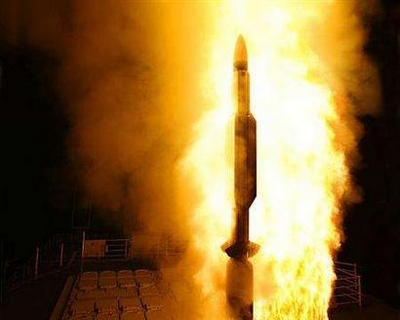Weather may delay shootdown of satellite
Updated: 2008-02-21 07:15
WASHINGTON -- High seas in the north Pacific may force the Navy to wait another day before launching a heat-seeking missile on a mission to shoot down a wayward US spy satellite, the Pentagon said Wednesday.
|
A Standard Missile-3 (SM-3) is launched from a guided-missile cruiser in an image courtesy of the U.S. Navy. The Navy is unlikely to try to shoot apart an errant satellite on Wednesday due to rough seas in the Pacific, a senior U.S. military official said. [Agencies] |
Weather conditions are one of many factors that US military officers are taking into account as they decide whether to proceed with the mission Wednesday or to put it off, according to a senior military officer who briefed reporters at the Pentagon on condition that he not be identified.
The officer said the assumption had been that the mission would go forward Wednesday night, unless conditions are determined to be unfavorable. Earlier in the day, bad weather in the north Pacific was causing rough seas, which may be a problem for the USS Lake Erie, a cruiser armed with two SM-3 missiles.
|
|||
Alluding to the high seas and strong winds, the officer added, "It has not been enough for us to say `no'" and put the launch mission off until Thursday. But it would take improved conditions to proceed.
The Pentagon had been waiting until the space shuttle Atlantis returned to Earth before launching the missile.
"We're now into the window," the senior military officer said minutes after the shuttle landed at 9:07 am EST.
He said the mission could go forward on any day until Feb 29, when the satellite is projected to have re-entered the Earth's atmosphere, making it infeasible to attempt to hit it with the Navy missile.
Officers have hours in which to monitor a long checklist of technical factors and conditions before deciding whether to proceed with the missile launch. But the period in which the missile must launch in order to have an optimum chance of success against the satellite is only "a matter of seconds," the senior military officer said.
The attempted shootdown was approved by President Bush last week out of concern that toxic fuel on board the satellite could crash to earth and potentially harm humans, the Defense Department has said.
Officials will know within minutes of the SM-3 missile launch whether the missile has hit the satellite, but it will take a day or two to know whether the fuel tank has been destroyed, officials said.
The military has readied a three-stage Navy missile, designated the SM-3, which has chalked up a high rate of success in a series of missile defense tests since 2002. In each case it targeted a short- or medium-range ballistic missile, never a satellite. A hurry-up program to adapt the missile for this anti-satellite mission was completed in a matter of weeks; Navy officials say the changes will be reversed once this satellite is down.
The government issued notices to aviators and mariners to remain clear of a section of the Pacific Ocean beginning at 10:30 pm EST Wednesday, indicating the first window of opportunity to launch an SM-3 missile from the USS Lake Erie in an effort to hit the wayward satellite.
Having lost power shortly after it reached orbit in late 2006, the satellite is out of control and well below the altitude of a normal satellite. The Pentagon wants to hit it with an SM-3 missile just before it re-enters Earth's atmosphere, in that way minimizing the amount of debris that would remain in space.
Left alone, the satellite would be expected to hit Earth during the first week of March. About half of the 5,000-pound spacecraft would be expected to survive its blazing descent through the atmosphere and would scatter debris over several hundred miles.
Adding to the difficulty of the shootdown mission, the missile will have to do better than just hit the bus-sized satellite, a Navy official said Tuesday. It needs to strike the relatively small fuel tank aboard the spacecraft in order to accomplish the main goal, which is to eliminate the toxic fuel that could injure or even kill people if it reached Earth. The Navy official described technical aspects of the missile's capabilities on condition that he not be identified.
Also complicating the effort will be the fact that the satellite has no heat-generating propulsion system on board. That makes it more difficult for the Navy missile's heat-seeking system to work, although the official said software changes had been made to compensate for the lack of heat.
|
|
|
||
|
||
|
|
|
|




